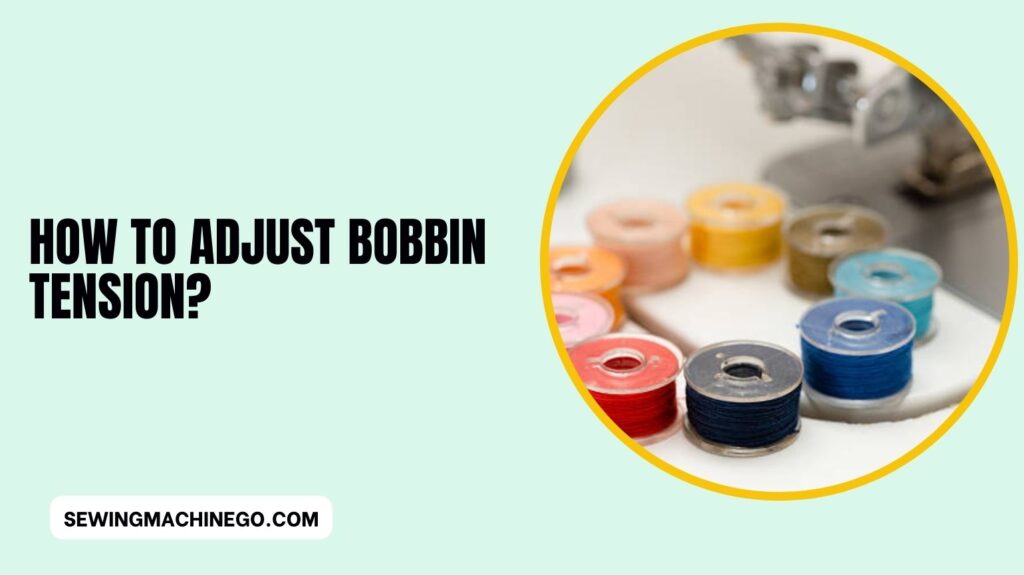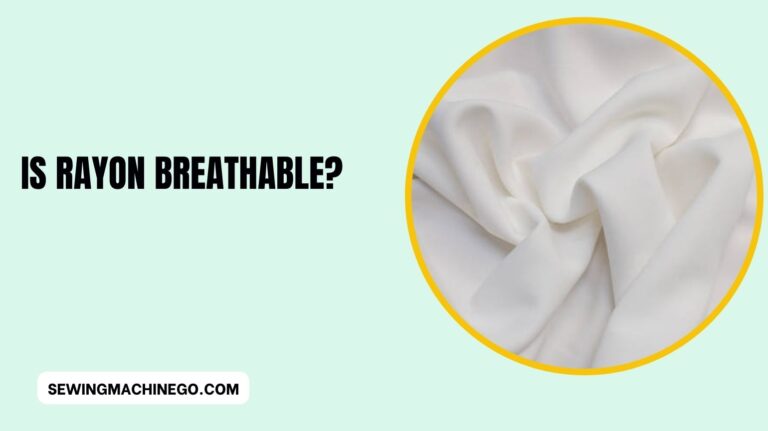How to Adjust Bobbin Tension? (Ultimate Guide) In 2023
Bobbin tension is a critical aspect of sewing that often gets overlooked. For both beginners and experienced sewers,
understanding how to adjust bobbin tension is crucial for achieving high-quality and consistent stitching. In this article, we will explore the ins and outs of bobbin tension, why it’s essential, and how to make the necessary adjustments.

How to Adjust Bobbin Tension?
Sewing is an art, and achieving perfect stitches requires attention to detail. One often underestimated detail is bobbin tension, which complements the upper thread tension.
Bobbin tension is the tightness or looseness of the thread wound on the bobbin. It affects the overall stitch quality, and improper tension can lead to various issues, such as loose stitches, thread breakage, or fabric puckering.
What is Bobbin Tension?
Bobbin tension is the amount of resistance the bobbin thread exerts against the upper thread. When the tension is set correctly, the stitches will be even, and the fabric will be properly sewn together.
If the tension is too loose, the stitches may appear sloppy, and if it’s too tight, the fabric can pucker.
Why is Bobbin Tension Important?
Correct bobbin tension is crucial for several reasons:
- It ensures even and balanced stitches.
- It prevents thread bunching on the underside of your fabric.
- It enhances the overall quality of your sewing projects.
- It reduces the likelihood of thread breakage.
- It minimizes frustration and saves time when troubleshooting sewing issues.
Signs of Incorrect Bobbin Tension
To determine if your bobbin tension needs adjustment, watch out for the following signs:
- Uneven or loose stitches
- Thread bunching on the underside of the fabric
- Fabric puckering or gathering
- Frequent thread breakage
- Difficulty in creating a smooth and consistent stitch
How to Adjust Bobbin Tension?
Adjusting bobbin tension is a straightforward process, but it’s essential to follow your sewing machine’s specific guidelines. Here are the general steps:
a. Checking Your Sewing Machine Manual
Before making any adjustments, consult your sewing machine’s manual. It provides valuable information on how to adjust bobbin tension and is tailored to your machine’s model and make.
b. Manual Adjustment
- Turn off your sewing machine and unplug it for safety.
- Locate the bobbin case and remove it from the machine.
- Identify the bobbin tension screw. This small screw controls the tension of the bobbin thread.
- Use a small screwdriver to make slight adjustments. Turn the screw clockwise to increase tension and counterclockwise to decrease it.
- Test your machine with a piece of scrap fabric to ensure the stitches are balanced.
c. Automatic Tension Adjustment
Some modern sewing machines come with automatic tension adjustment features. Refer to your manual to understand how this feature works and how to activate it.
6. Bobbin Tension Adjustment Tools
You’ll need a few tools to adjust bobbin tension effectively:
- Sewing machine manual
- Small screwdriver
- Scrap fabric for testing
Step-by-Step Guide to Adjusting Bobbin Tension
Here is the Step-by-Step Guide to Adjusting Bobbin Tension:
Step 1: Prepare Your Workstation
Create a safe and organized workspace. Ensure your machine is turned off and unplugged.
Step 2: Locate the Bobbin Tension Screw
Refer to your manual to find the exact location of the bobbin tension screw on your machine.
Step 3: Test Sewing
After making initial adjustments, test your machine with a piece of scrap fabric. Check for stitch quality and adjust the tension screw as needed.
Step 4: Fine-Tuning
Keep fine-tuning the tension until you achieve balanced and even stitches.
Common Mistakes to Avoid
- Over-tightening the tension screw, which can lead to thread breakage.
- Ignoring your sewing machine’s manual instructions.
- Skipping the testing phase after making adjustments.
Importance of Regular Maintenance
To ensure consistent and trouble-free sewing, it’s crucial to maintain your sewing machine, including bobbin tension adjustments.
Regular maintenance can extend the life of your machine and enhance the quality of your work.
People also ask
How do I know if my bobbin tension is correct?
To check if your bobbin tension is correct, examine the stitches on the fabric’s underside.
Correct tension will produce even and balanced stitches without visible loops or puckering.
If your stitches look messy, loose, or too tight, it’s a sign that your bobbin tension may need adjustment.
Which screw head on the bobbin should you turn to adjust the bobbin tension?
To adjust the bobbin tension, you should turn the small screw located on the bobbin case.
This screw controls the tension of the bobbin thread and can be turned clockwise to increase tension or counterclockwise to decrease it.
Why is my sewing machine leaving loops on the bottom?
If your sewing machine is leaving loops on the bottom, it’s likely due to incorrect bobbin tension.
Loops on the bottom of your fabric indicate that the bobbin thread is too loose.
Adjust the bobbin tension by slightly tightening the tension screw on the bobbin case until the loops disappear.
How do you adjust the bobbin tension on an old Singer?
To adjust the bobbin tension on an old Singer sewing machine, follow these steps:
Refer to your machine’s manual for specific instructions, as the process can vary between models.
Locate the bobbin case and the small tension screw on it.
Use a small screwdriver to turn the tension screw. Turn it clockwise to increase tension or counterclockwise to decrease it.
Test your machine with a piece of scrap fabric and adjust the tension as needed for balanced stitches.
Conclusion
In the world of sewing, attention to detail is paramount. Bobbin’s tension, often overlooked, plays a significant role in achieving the perfect stitch.
By understanding the importance of bobbin tension and learning how to adjust it correctly, you can take your sewing projects to the next level.
Remember to consult your sewing machine’s manual and follow the provided guidelines for the best results.

Hi, I am Alice, and I am your perfect guide to the world of sewing machines. With over 10 years of experience in the sewing industry, I am passionate about sharing my knowledge and expertise to help you make the most of your sewing journey. about me






